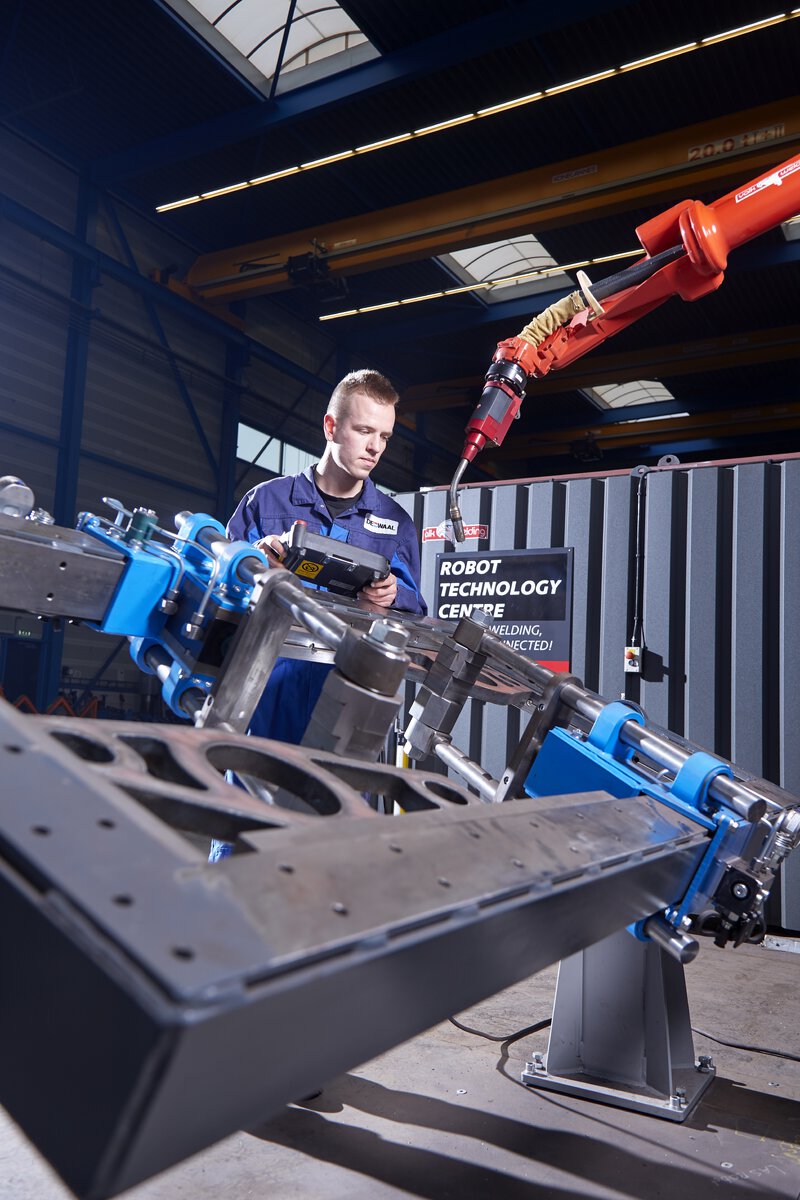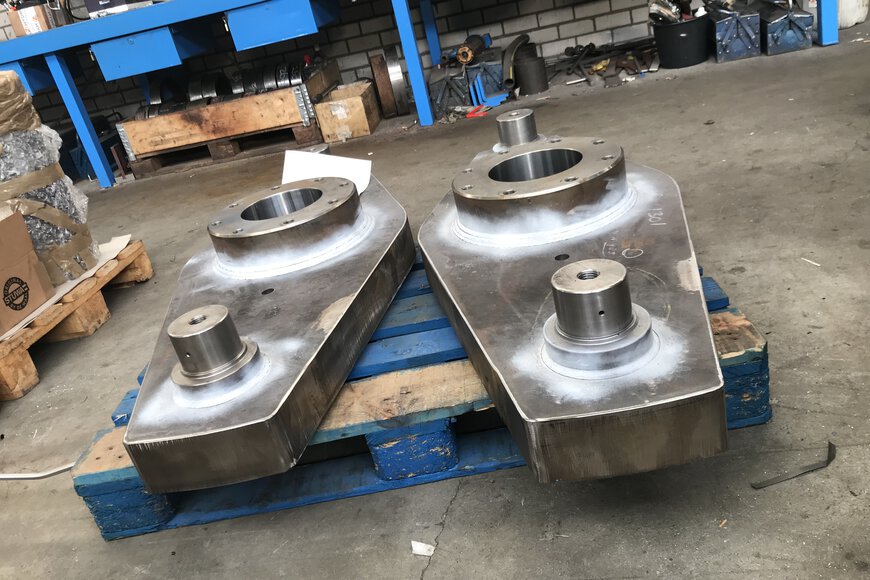Tietotaidon vanheneminen
"Myös laivanrakennuksen alalla kohtaamme tietotaidon vanhenemista, mikä aiheuttaa sen, että menetämme valtavan arvokkaan osan tiedosta ja kokemuksesta, jos emme huolehdi ajoissa. Näemme, että on vaikeaa saada uusia ammattihitsaajia tai kouluttaa tulevia hitsaajia. Siksi ulkoistamme osan työstä. Sillä välin paine pysyä tuotantokuormituksen huippuaikojen mukana on vaikeaa, tietäen, että käsityöammatit katoavat ajan myötä ja suuri osa työstä siirtyy ulkomaille. Siksi näemme hitsausrobottien käytön mahdollisena ratkaisuna," selittää perustaja Johan Verlaan. "Siksi aloitimme tämän innovatiivisen taistelun."
Nykytilanne
Nykytilanteessa peräsinjärjestelmien ohjaimet hitsataan puoliautomaattisesti. Ympyränmuotoiset hitsaukset on muutettava useiksi kerroksiksi ja ne on hitsattava molemmille puolille muodonmuutosten estämiseksi. Operaattori on läsnä koko tuotantosyklin ajan kääntääkseen työkappaleen nosturilla. "Sykliaika on 40 minuuttia, josta 16 minuuttia on käsittelyaikaa."








